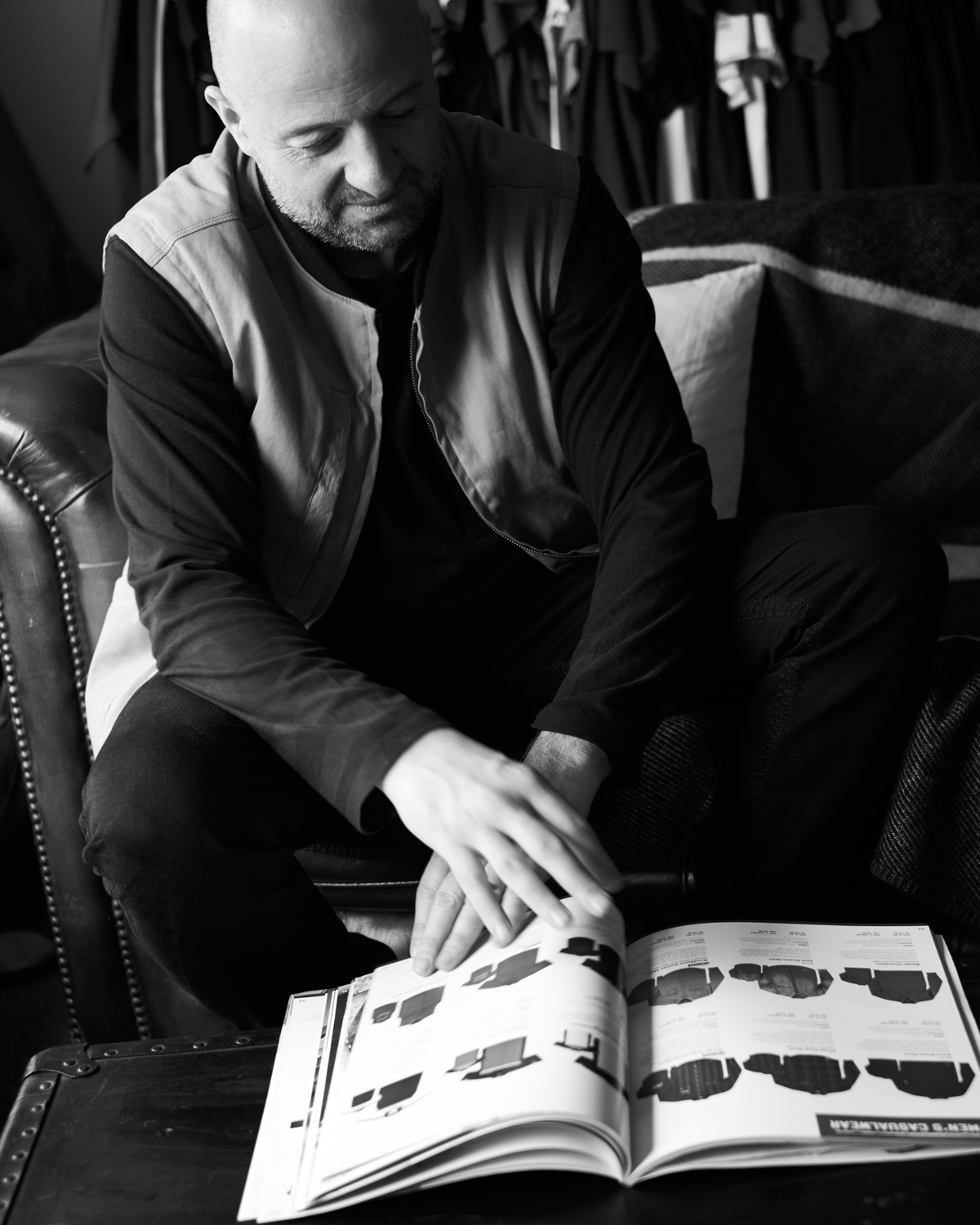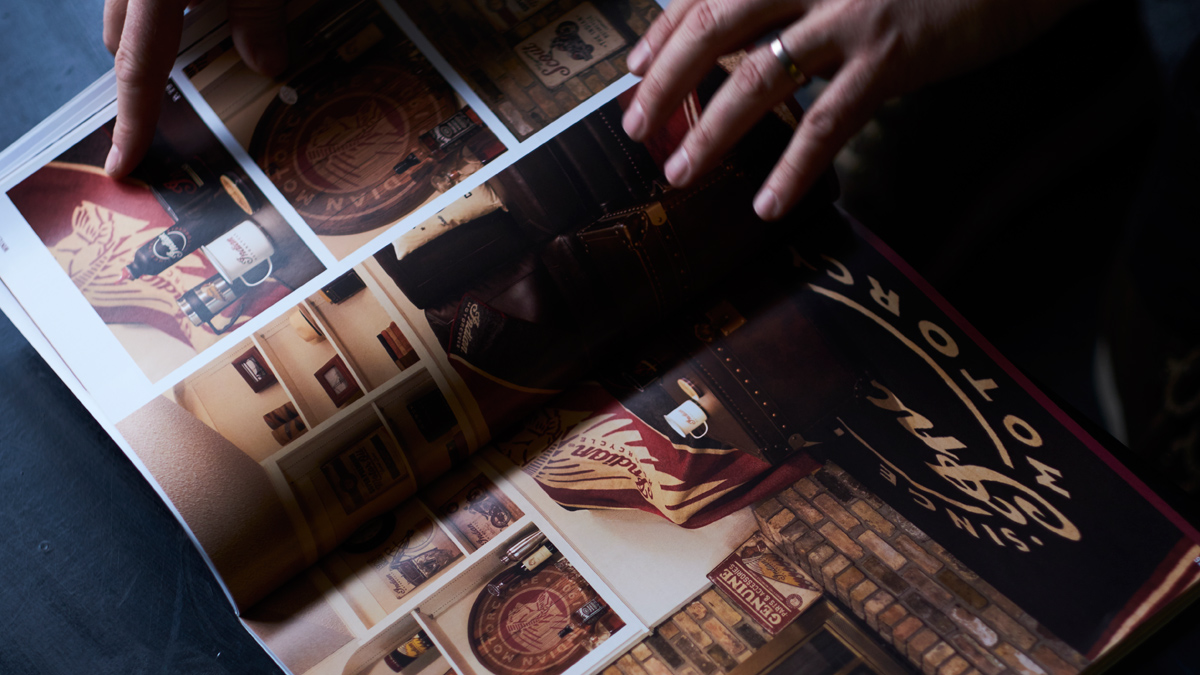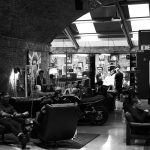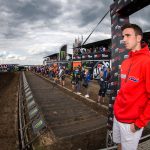Whether it’s Triumph, BSA, Indian, Deus or another staple of cool within motorcycling, the ability to ‘look the part’ through both casualwear and practical riding garments is pretty damn expansive. The presence of bike brands into the high street and the proliferation of quality clothing goods with companies more renowned for their two-wheeled prowess and history has also been distinctly noticeable since the start of the millennium.
The resurgence of Indian since a re-birth with the Polaris group has arguably as much to do with shrewd dissemination of the brand as the strategic moves with their motorcycle range and renewed ventures into sports like Flat Track. In the last two years Indian apparel has boasted the same high-class and desirable look as – for example – the collections utilised by Triumph to so aptly support the burgeoning British firm.
It was a curiosity and quest to find out who was behind the stream of clothing that led us to the light and airy offices of Fuelled Apparel in central London. The company, headed by Ian O’Reilly formerly of Triumph and now a cog in the vast Polaris empire, has been creating rafts of products and accessories that have become hard to ignore in dealerships, showrooms and soon to hit U.S. shopping malls.
From design to fabrication from influence to inspiration: we were glad to steal some of his time between regular trips to Polaris HQ in Minnesota, and were joined by Design and Development Manager Fanny Cheung to talk about how Fuelled provides manufacturers with a potent promotional arm away from the machinery. ‘I started working with Triumph back in 1996 and was looking after the clothing, the merchandising and the licencing,’ O’Reilly explains of his background. ‘I was there for fourteen years and saw a helluva lot of growth and different aspects of their development. When I decided to leave my wife was the one who actually told me that I should do the role for other people. I was a bit sceptical and she really pushed me to do it. Our first client was Polaris and they had the Victory brand and were in negotiations to buy Indian. They asked us to do a study about Victory apparel and how to structure it differently. That project ran for about three months and we got on very well and the acquisition of Indian happened in that time. It was brought into the company and about twelve months later I had the call and we started working together. In the meantime I did some work for Suzuki and Akrapovic…’
Is it daunting prospect to think and take on a brand like Indian? Simply because of the history and heritage involved?
Ian: True. I think all of the brands we work with – or have worked with – are all a bit different. The depth of heritage can be vast with Indian – and also Triumph – but it depends on where they want to go with it. Indian had a very clear idea of the percentage; it was about 70% heritage with the other 30% on modernity and they would then evolve it over time. When the marketing departments are very clear about where they are and where they want to go with the brand then it makes our job a lot easier. If they can say ‘this is what our customer should be’, ‘this is who will ride the bikes’, ‘this is how we will talk to them’ then all these details and aspects help with our development.

If you go to any show or dealer it does seem like the merchandise or apparel for a company like Indian or Triumph is as attractive as the motorcycles themselves…
Ian: When I started at Triumph we had more stock than sales, so too many bikes, and when I left I think they were not too far short of 50,000 so I saw that massive growth. And I saw the dealers change as well. Beforehand the bikes were quite bland and similar to each other and then we had the re-branding and the orientation to stick with twins and triples and once you start to get that really clear definition of where you are going as a company, what the bike stand for and what the customer is going to be like then translating that to clothing becomes easier.
What about this trend towards a custom/retro/café racer vibe that has helped nudge motorcycling more in the direction of the mainstream in the last decade…?
Ian: Like you say, I think it is about ten years now where I have seen this division of, say, a supersport rider who will want his one-piece leathers set or to look like his racing hero and a massive group of riders who want motorcycling clothing that doesn’t look like motorcycle clothing. And that’s because motorcycling is part of their lifestyle and not something that defines them. I think what we are seeing now with the café racers and the Bonnevilles, Scouts and Ducati Scramblers coming through are people that are on the bikes but don’t want to look like a biker…and that totally fits with what we are doing with Indian.
Talking about Indian specifically was there a very particular brief or were you able to get quite creative independently?
Ian: With any client we work closely with their marketing department and their new product development group. Fanny and I were in the States a few weeks ago and we were with Greg Brew, head of Industrial Design, so we were looking at bikes that will be coming out in four-five-six years time. OK, it doesn’t take that long to do apparel but we also need to know the direction of the company. We’re working on products now that will be delivered to market in about eighteen months time. If it is more complicated then it will be two years. So we need to know where they are going. In terms of the briefs they give us then they might involve specific colours or logos we can use.
Fanny: Or font styles…

Ian: But if we get good bike or brand information then we can easily translate that into good clothing proposals or mood boards to give back to them. We can articulate it in a way that they can see visually. It can be quite tricky to show people in the industry that might be engineers or from specific automotive background clothing and to expect them to know exactly what they want. They can express their desire for what they want to see and then it is our job to give that back in a form of clothing.
Fanny: [shows a collection of imagery] This is the mood board we did for Indian 1901 and a project launched in July 2016…we have a core Indian range that we sell through dealers and the network is probably about 350 worldwide with 180 in North America and then this 1901 collection is something that will be sold through department stores and retail starting in the States.
Is the prospect of general retail another hurdle to face for you? Being in the High Street as opposed to just the eyes of motorcycle customers and fans through a rack in a dealership?
Ian: Well, something like Deus [Ex Machina, custom brand] is now being sold through Nordstrom and fashion stores outside of the motorcycle world and we think Indian in particular – because of the awareness and art around the brand, the history and the look –can work outside of motorcycling.
It does seem strange that Indian has not been licenced to a fashion retail group…you can see things like Triumph, BSA or Norton t-shirts and so on the high street…
Ian: There was an arrangement to look at the impact of having a presence in the mall with a company called Lucky Brands and the Indian t-shirt quickly became the second best selling garment in there and ahead of others like Ford, Bob Dylan and Steve McQueen. It did really well and the idea was to ‘prove it’ there before doing it ourselves.
If you look at Barbour with their McQueen licence and collection…are there any lessons to be learned from that kind of affiliation?
Ian: Yeah. I think you can look at Barbour and McQueen and even what they did with International. You can look at Deus as well and I believe they were actually the two examples we used when we addressed the board at Polaris.
What about the fact that Fuelled, a British company, are handling such an American brand…?
Ian: It is interesting when we go to the States because the people there [at Polaris] think it is strange that we are in London, they are in Minnesota and production is in Iowa! It is true that Indian is steeped in Americana with this great heritage…but you cannot live within that. You have to be global and one of the advantages we have is being able to give that perspective. For them to grow internationally then they need that. It is great that they decided to work with a company based in London but I think they saw how well we did with Triumph and they knew that they’d have to do things differently for success with Indian.

What about the vendors? For a customer to buy a 20 dollar t-shirt is one thing but then a jacket or some boots are a much bigger investment…and it seems that across the Indian range the quality is faultless…
Ian: I’m glad you say that. Clearly what we sell is branded merchandise: it is for fans of the brand and that could mean a t-shirt or a five hundred dollar jacket. The logo is very much at the fore…but saying that we don’t just brand-stamp anything. It’s not like we go to a factory and say ‘nice jacket; we’ll put a logo here, here and here’. It is never off-the-shelf. Everything is bespoke.
So the process is…?
Ian: For every article we’ll have design briefs. We have two collections a year in the core range. So we start with the brief and decide what we want to put into the range. We do mood-boards and then show Polaris and make sure they are happy and it is in-fitting with the ‘direction’ and we are on-brand. Then we’ll make initial designs and get feedback on those, run them by the legal department to make sure they are happy and then we’ll go to first samples. When you asked about the vendors, the scope is vast: we’ll use someone that makes t-shirts in Los Angeles through to a company in Vietnam that makes the jackets. Actually in that case it is the same factory where Alpinestars [products] are made in or [a place] I would know from my Triumph days. The casualwear is made in the same factory as goods by Diesel so the level we are at is very high. Footwear is a new category…but there is a lot of change going on with CE marking and certification.
Such as?
Ian: France is leading the way with this but basically if you have motorcycling protective clothing or items with panels or other components then they need to be CE tested. There is a hell of a lot of testing involved in terms of the materials, durability and performance. So with our boots – instead of going to a typical motorcycle factory – we have gone with a casualwear factory for a different look and feel. We are now working with them to get their standard up to achieve that motorcycle CE mark. We designed the boot from scratch, so the leather and the grommets, rivets, labels and every aspect of it.
Fanny: In terms of designers we’ll work with very different people and specialised in different categories; footwear being an example and we’ll have a guy that is only working in this field, not casualwear as well. Each category is very specific in materials but also drawings and design knowledge with regards to dimensions on the product itself. We have designers from the U.S. to the UK to Asia and France for the helmets.
Ian: We probably have eight different designers for these categories and it is all managed from here. It is a challenge. We spoke about consistency from the brand but we also have to make sure that is very clear in the briefs that we create for the variety of designers and that the overall output fits together as a collection.
Fanny: Here we are like a ‘server’: all the information is ‘blinking’ and we have to bring everything together to create this collection.
To read the rest of the article simply click HERE
Photos by RB








